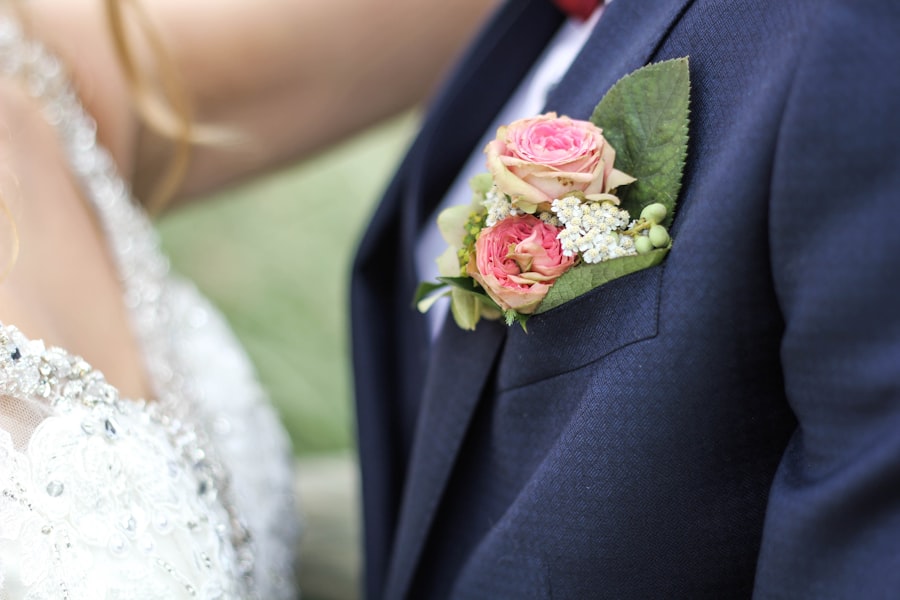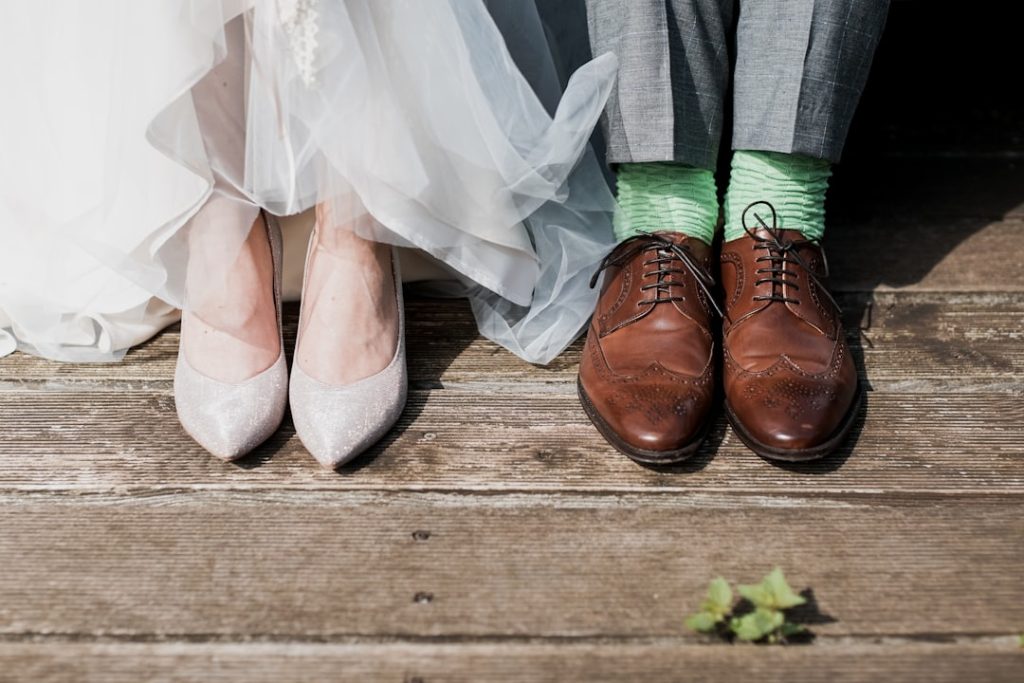When we think about the journey to our wedding day, the wedding dress often stands out as one of the most significant elements. It is not just a piece of clothing; it symbolizes love, commitment, and the beginning of a new chapter in our lives. However, the perfect wedding dress is rarely found off the rack.
This is where the importance of wedding dress alterations comes into play. Alterations can transform a dress from merely beautiful to absolutely breathtaking, ensuring that it fits us like a glove and reflects our unique style. The process of alterations goes beyond mere adjustments; it is about enhancing the overall aesthetic and ensuring that we feel confident and comfortable on our special day.
A well-fitted dress can accentuate our best features while providing the necessary support and comfort for a long day of celebration. Whether it’s taking in the sides, adjusting the hemline, or adding intricate details, alterations allow us to personalize our dress, making it truly ours. By investing time and effort into this process, we are not only ensuring a perfect fit but also creating a garment that holds sentimental value for years to come.
Key Takeaways
- Wedding dress alterations are important to ensure the perfect fit and look for your special day
- Finding a skilled and experienced tailor is crucial for the success of your wedding dress alterations
- Timing is key when it comes to wedding dress alterations, so plan ahead and schedule fittings accordingly
- Clear communication with your tailor about your vision for the dress is essential for a successful outcome
- Consider the comfort and mobility of your altered wedding dress to ensure you can move and enjoy your day with ease
Finding the right tailor for your wedding dress alterations
Finding the right tailor for our wedding dress alterations is a crucial step in this journey. We want someone who understands not only the technical aspects of tailoring but also the emotional significance of our dress. A skilled tailor should have experience working with bridal gowns, as these garments often require specialized techniques and an eye for detail.
We can start by seeking recommendations from friends or family who have recently gone through the same process or by reading online reviews to gauge the reputation of local tailors. Once we have a shortlist of potential tailors, it’s essential to schedule consultations with them. During these meetings, we should pay attention to their communication style and willingness to listen to our ideas.
A good tailor will ask questions about our vision for the dress and offer suggestions based on their expertise. It’s also important to assess their portfolio; seeing examples of their previous work can give us confidence in their abilities. Ultimately, we want to choose someone who makes us feel comfortable and excited about the alterations process, as this will set the tone for our entire experience.
Timing your wedding dress alterations perfectly

Timing is everything when it comes to wedding dress alterations. We need to consider not only when we purchase our dress but also how long it will take for alterations to be completed. Ideally, we should start this process as soon as we have our gown in hand.
Many experts recommend scheduling our first fitting at least three months before the wedding date. This allows ample time for any necessary adjustments and ensures that we won’t be rushed as the big day approaches. In addition to scheduling our fittings well in advance, we should also factor in any potential delays that may arise during the alteration process.
Sometimes, unexpected changes may be needed after our initial fitting, or we might decide to add embellishments that require additional time. By allowing ourselves a buffer period, we can alleviate stress and ensure that our dress is perfect when we finally put it on for the last time before walking down the aisle.
Communicating your vision to the tailor
Effective communication with our tailor is key to achieving the desired outcome for our wedding dress alterations. We should come prepared with ideas about what we want, whether it’s a specific fit, style adjustments, or additional details like lace or beading. Bringing along inspiration photos can be incredibly helpful in conveying our vision.
These visuals can serve as a reference point for both us and the tailor, ensuring that we are on the same page throughout the process. However, while it’s important to express our desires clearly, we should also remain open to the tailor’s professional input. They may have valuable insights based on their experience that can enhance our vision or suggest alternatives that we hadn’t considered.
This collaborative approach can lead to a more successful outcome, as it combines our personal style with their technical expertise. Ultimately, fostering a positive dialogue with our tailor will help us achieve a stunning final result that reflects who we are.
Considering the comfort and mobility of your altered wedding dress
As we embark on the journey of altering our wedding dress, comfort and mobility should be at the forefront of our minds. While aesthetics are undoubtedly important, we must also remember that we will be wearing this dress for an extended period during one of the most significant days of our lives. We want to feel at ease as we walk down the aisle, dance at the reception, and celebrate with loved ones.
Therefore, discussing comfort with our tailor is essential. During fittings, we should pay attention to how the dress feels when we move. Are there any areas that feel restrictive?
Does the fabric allow for easy movement? If we plan on dancing or participating in various activities throughout the day, it’s crucial that our dress accommodates those movements without causing discomfort. Our tailor can make adjustments to ensure that we have enough room to move freely while still maintaining the overall silhouette and style of the gown.
Managing expectations for the final fitting

As we approach the final fitting of our wedding dress, managing expectations becomes vital. It’s easy to get caught up in the excitement and envision a flawless outcome; however, it’s important to remember that alterations are a process that may not always go exactly as planned. We should approach this fitting with an open mind and be prepared for any last-minute adjustments that may be necessary.
During this fitting, we should take time to carefully assess how the dress fits and feels. If there are any concerns or areas that don’t meet our expectations, it’s crucial to communicate these with our tailor immediately. They are there to help us achieve our vision and will appreciate our honesty.
By addressing any issues during this fitting rather than waiting until the day before the wedding, we can ensure that there is enough time for any final tweaks needed to make our dress perfect.
Storing and caring for your altered wedding dress
Once our wedding dress has been altered and is ready for its big debut, proper storage and care become essential to preserve its beauty. We should avoid hanging it on a regular hanger, as this can cause stretching or distortion of its shape over time. Instead, using a padded hanger specifically designed for bridal gowns can help maintain its form while keeping it safe from dust and damage.
Additionally, if we’re not wearing our dress immediately after alterations, it’s wise to store it in a breathable garment bag rather than plastic. Plastic can trap moisture and lead to mildew or yellowing over time. We should also consider keeping it in a cool, dry place away from direct sunlight to prevent fading or discoloration.
Taking these precautions will ensure that when we finally slip into our gown on our wedding day, it looks just as stunning as it did after alterations.
Budgeting for unexpected alterations
As we navigate through the process of preparing for our wedding day, budgeting for unexpected alterations is an important consideration that often gets overlooked. While we may have a clear idea of how much alterations will cost based on initial consultations, unforeseen changes can arise as fittings progress. Whether it’s adjusting for weight fluctuations or deciding to add embellishments at the last minute, these factors can impact our budget significantly.
To avoid financial stress leading up to our wedding day, it’s wise to set aside a contingency fund specifically for alterations. This way, if unexpected costs arise, we won’t feel overwhelmed or forced to compromise on our vision for the dress. By planning ahead and being realistic about potential changes, we can ensure that our experience remains enjoyable and stress-free as we prepare for one of life’s most memorable moments.
In conclusion, navigating the world of wedding dress alterations requires careful consideration and planning. From understanding their importance to finding the right tailor and managing expectations throughout the process, each step plays a vital role in ensuring that we feel confident and beautiful on our special day. By prioritizing comfort and communication while also budgeting for unexpected changes, we can create a seamless experience that culminates in a stunning gown tailored just for us.
